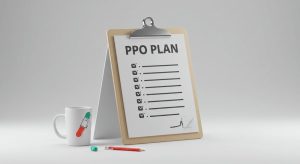1. Introduction
For a bed to be covered by Medicare, a doctor’s prescription stating the medical need for a bed is required. The patient must also be enrolled in Medicare Part B and have a medical need for the type of bed that is being requested. The medical equipment provider must be eligible and enrolled in Medicare. This is important to check because if your supplier is not enrolled in Medicare, Medicare will not pay the claim even though the supplier should. Coined “Supplier Standards” (see section 2), these standards are a recent development as a result of the Affordable Care Act. To ensure that your supplier is eligible, ask your supplier if they are approved by Medicare.
A new question is attracting some interest. If a bed is needed for a medical condition, is it covered by Medicare Part B Medical Insurance? The answer is that those with Original Medicare who meet certain criteria are covered for a bed. However, Medicare coverage for a basic adjustable or hospital bed is quite limited and does not cover many of the fancy beds that are on the market today.
Find Medicare Plans in 3 Easy Steps
We can help get up to $0 monthly premium Medicare plans
2. Eligibility Criteria for Medicare Coverage
Note: A manual hospital bed is not covered because changing position in the bed can be considered as effectively as if it were to meet the same criteria in a regular home bed.
Specific coverage criteria: 1. A semi-electric hospital bed is covered if the patient cannot get in or out of a bed on their own. 2. A fully electric hospital bed is covered if ANY ONE of the following criteria A or B is met: A. The patient requires positioning of the body to alleviate pain, or B. The patient requires elevation of the legs. 3. A patient with neuromuscular disease would not generally be a candidate for a fully electric hospital bed unless changing body position or the elevation of the head is shown to significantly affect the course of the disease.
Patients with the above conditions qualify for a semi-electric hospital bed if they can supply a letter of medical necessity from their doctor. The letter of medical necessity should include how the bed will prevent the need for further medical complications that may require a higher level of care and how the patient is at risk for those complications. It should also include the patient’s functional condition and why a higher level of care is not necessary at this time.
Criteria A: Leg weakness, Muscular Dystrophy, Multiple Sclerosis, Spinal Cord Injury
Find Medicare Plans in 3 Easy Steps
We can help get up to $0 monthly premium Medicare plans
3. Exclusions and Limitations
Medicare coverage includes a variety of life-improving medical products. One of these categories is pressure reducing support surfaces. After conducting our research, we concluded that mattresses and overlays are a reimbursable item through the Medicare Part B durable medical equipment benefit. We identified the requisites for a product to be considered “reimbursable”. Medicare restricts coverage to products that are considered to be medically necessary. They define such products as those that are used for treatment of an illness or injury, and that are suited for use in the patient’s home. Furthermore, to qualify for Medicare reimbursement, a product must pass a series of product specific utilization criteria defined by the National Coverage Determination for the particular benefit category. While it’s clear from the above information that a mattress can be reimbursed through Medicare, we found that there is much confusion among healthcare providers and suppliers about what specific products are actually covered. Many are not aware of what medical necessities qualify a patient for a new mattress, and we found that many suppliers do not know how to make a claim to Medicare for such products. After doing a little research we found that a patient can qualify for a new mattress when it is deemed medically necessary to treat or prevent the patient’s current pressure sores. You get the mattress with no preset rental period, and it is yours to keep. (Sehgal, 2021)(Berlowitz)(Han, 2024)(Okursoy, 2021)
Find Medicare Plans in 3 Easy Steps
We can help get up to $0 monthly premium Medicare plans
4. Alternatives to Medicare Coverage
Some individuals may try to get their durable medical equipment covered by purchasing a different product that is already covered. A standard hospital bed is covered for individuals with Part B if they meet the same criteria mentioned above. If it can be shown that a hospital bed is medically necessary for the patient, there is a good chance of getting a doctor’s prescription to submit to the durable medical equipment supplier, which would result in getting the hospital bed for little to no cost after the 80% coverage from Medicare. Alternatively, a lift can be used in conjunction with a cheaper regular bed that is not covered by Medicare to solve the problem of transferring to and from a bed, which would be covered under similar conditions to that of a hospital bed. Because these other strategies are linked with a covered item/service and it is not explicit that there must be a purchase or rental of a non-covered item, there may be success in using a doctor’s prescription to submit an insurance claim. It is relatively rare but possible that one may win an appeal in court in trying to acquire coverage of a standard adjustable bed or a more fully featured hospital bed. Beyond attempts to gain Medicare coverage of a mattress or bed using strategies involving different products, it is occasionally possible to enroll in a Medicare Advantage (Part C) plan under which there may be more options on coverage of durable medical equipment. This is something worth investigating for those who are considering other health care needs and would still prefer the included features of an adjustable bed that they will not find in a standard hospital bed. (Volkert et al.2022)(Montero-Odasso et al.2022)(Tyrrell et al.2021)(Yuan et al.2022)(Xu et al.2021)(Ehni et al., 2021)(Chen et al.2024)(Heydari et al., 2022)(Cook et al.2020)
Find Medicare Plans in 3 Easy Steps
We can help get up to $0 monthly premium Medicare plans
5. Conclusion
The conclusion regarding coverage for mattresses by Medicare seems straightforward. Medicare does not cover such mattresses when considered medically unnecessary. However, the conclusion must also be reached that Medicare coverage for such mattresses may not be black and white. This is evidenced from the fact that one person evaluating this coverage for a particular health condition may be denied. Then another person with the same condition may receive approval for coverage. A number of reasons exist for this paradox. These reasons are not trivial. Understanding them may help a person gain coverage approval. First, the letter of the Medicare law concerning DME and supplies coverage is not crisp and clear. Often it is open to interpretation. This creates an environment where inconsistent insurance coverage approval denials and approvals are unavoidable. Second, the initial denial of Medicare coverage for a certain item does not constitute the final answer on the matter. In many cases people have won appeals to receive coverage for said item. Third, some states have more relative leniency in Medicare coverage for certain items than others. This information is sometimes unbeknownst to patients. In this case, it certainly wouldn’t hurt to say, “My neighbor in such and such state got coverage for this. Why can’t I?” Finally, Medicare coverage decisions are ultimately in the hands of private insurance companies. It has become common knowledge that said companies often deny coverage for certain items in a “deny everyone first, approve on case-by-base basis” manner. If the patient or his/her representative exhibits persistence, there is a good chance that said item will eventually become covered. Given all this, people seeking prescribed mattresses for particular conditions should not be immediately deterred by an initial denial of coverage. The disenfranchised should peruse the Medicare statutes themselves and/or consult with a legal professional who has knowledge in Medicare law. They should also inquire with the insurance company as to the reason of denied coverage. This process may be daunting, but could potentially lead to legal advocacy to obtain coverage, which would ultimately alleviate health problems on the part of the patient.
Find Medicare Plans in 3 Easy Steps
We can help get up to $0 monthly premium Medicare plans
References:
Sehgal, S., 2021. The Enterprise of Health: An Evaluation of the Accessibility of Durable Medical Equipment in Low-Income Households. uconn.edu
Berlowitz, D. R., . Reimbursement Regulations Impacting Wound Care. repository.poltekkes-kaltim.ac.id. poltekkes-kaltim.ac.id
Han, D., 2024. The impact of the 340B Drug Pricing Program on critical access hospitals: evidence from Medicare Part B. Journal of Health Economics. sciencedirect.com
Okursoy, M. E., 2021. Design strategies for the development of home use medical devices: a study on CPAP devices. metu.edu.tr
Volkert, D., Beck, A.M., Cederholm, T., Cruz-Jentoft, A., Hooper, L., Kiesswetter, E., Maggio, M., Raynaud-Simon, A., Sieber, C., Sobotka, L. and van Asselt, D., 2022. ESPEN practical guideline: Clinical nutrition and hydration in geriatrics. Clinical Nutrition, 41(4), pp.958-989. clinicalnutritionjournal.com
Montero-Odasso, M., Van Der Velde, N., Martin, F.C., Petrovic, M., Tan, M.P., Ryg, J., Aguilar-Navarro, S., Alexander, N.B., Becker, C., Blain, H. and Bourke, R., 2022. World guidelines for falls prevention and management for older adults: a global initiative. Age and ageing, 51(9), p.afac205. oup.com
Tyrrell, C.S., Mytton, O.T., Gentry, S.V., Thomas-Meyer, M., Allen, J.L.Y., Narula, A.A., McGrath, B., Lupton, M., Broadbent, J., Ahmed, A. and Mavrodaris, A., 2021. Managing intensive care admissions when there are not enough beds during the COVID-19 pandemic: a systematic review. Thorax, 76(3), pp.302-312. bmj.com
Yuan, F., Yao, R., Sadrizadeh, S., Li, B., Cao, G., Zhang, S., Zhou, S., Liu, H., Bogdan, A., Croitoru, C. and Melikov, A., 2022. Thermal comfort in hospital buildings–A literature review. Journal of Building Engineering, 45, p.103463. ntnu.no
Xu, W., Jambhulkar, S., Zhu, Y., Ravichandran, D., Kakarla, M., Vernon, B., Lott, D.G., Cornella, J.L., Shefi, O., Miquelard-Garnier, G. and Yang, Y., 2021. 3D printing for polymer/particle-based processing: A review. Composites Part B: Engineering, 223, p.109102. sciencedirect.com
Ehni, H. J., Wiesing, U., & Ranisch, R., 2021. Saving the most lives—A comparison of European triage guidelines in the context of the COVID‐19 pandemic. Bioethics. wiley.com
Chen, P., Vilorio, N.C., Dhatariya, K., Jeffcoate, W., Lobmann, R., McIntosh, C., Piaggesi, A., Steinberg, J., Vas, P., Viswanathan, V. and Wu, S., 2024. Guidelines on interventions to enhance healing of foot ulcers in people with diabetes (IWGDF 2024 update). Diabetes/Metabolism Research and Reviews, 40(3), p.e3644. wiley.com
Heydari, M., Lai, K. K., Fan, Y., & Li, X., 2022. A review of emergency and disaster management in the process of healthcare operation management for improving hospital surgical intake capacity. Mathematics. mdpi.com
Cook, T.M., El‐Boghdadly, K., McGuire, B., McNarry, A.F., Patel, A. and Higgs, A., 2020. Consensus guidelines for managing the airway in patients with COVID‐19: Guidelines from the Difficult Airway Society, the Association of Anaesthetists the Intensive Care Society, the Faculty of Intensive Care Medicine and the Royal College of Anaesthetists. Anaesthesia, 75(6), pp.785-799. wiley.com





